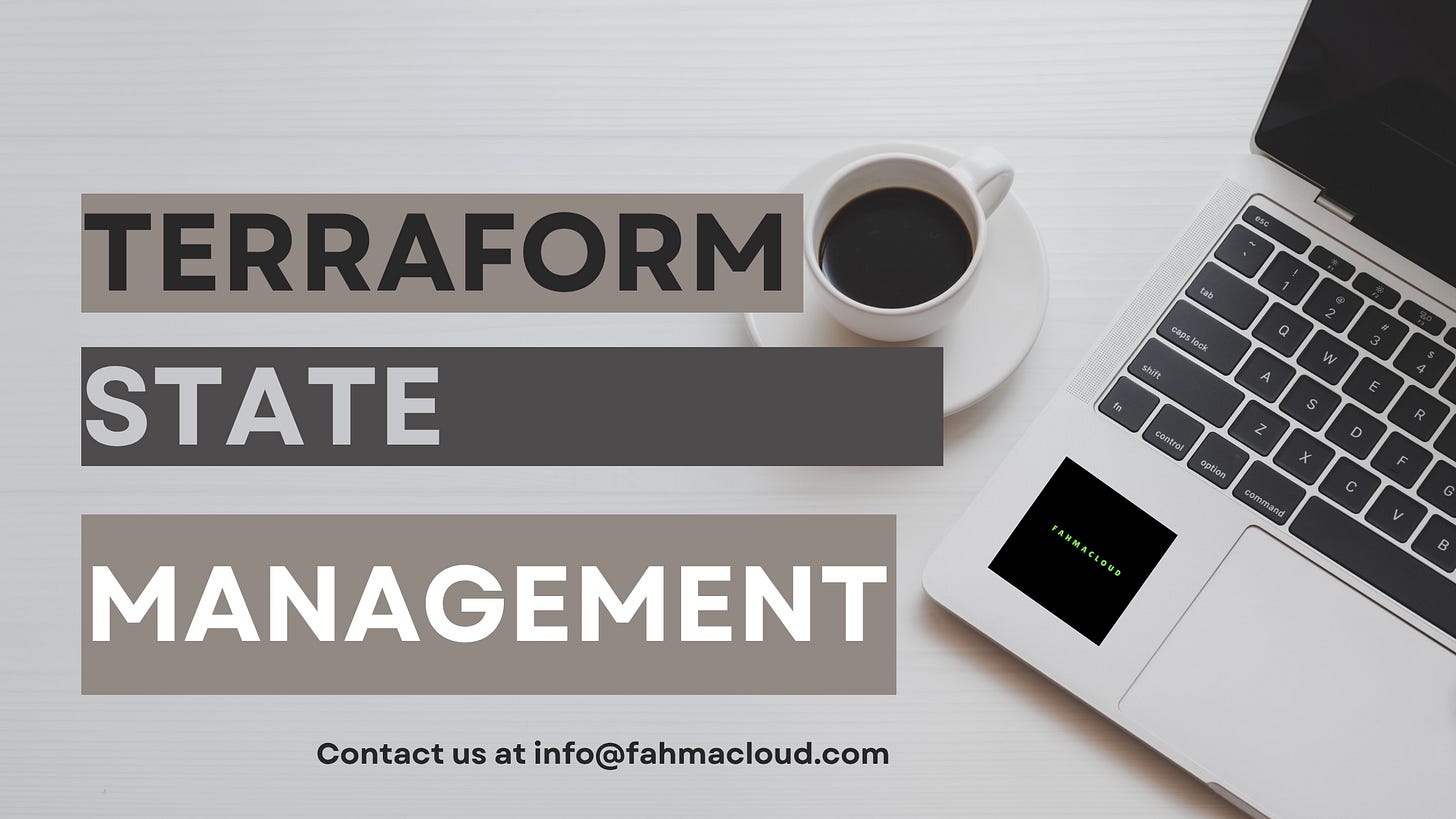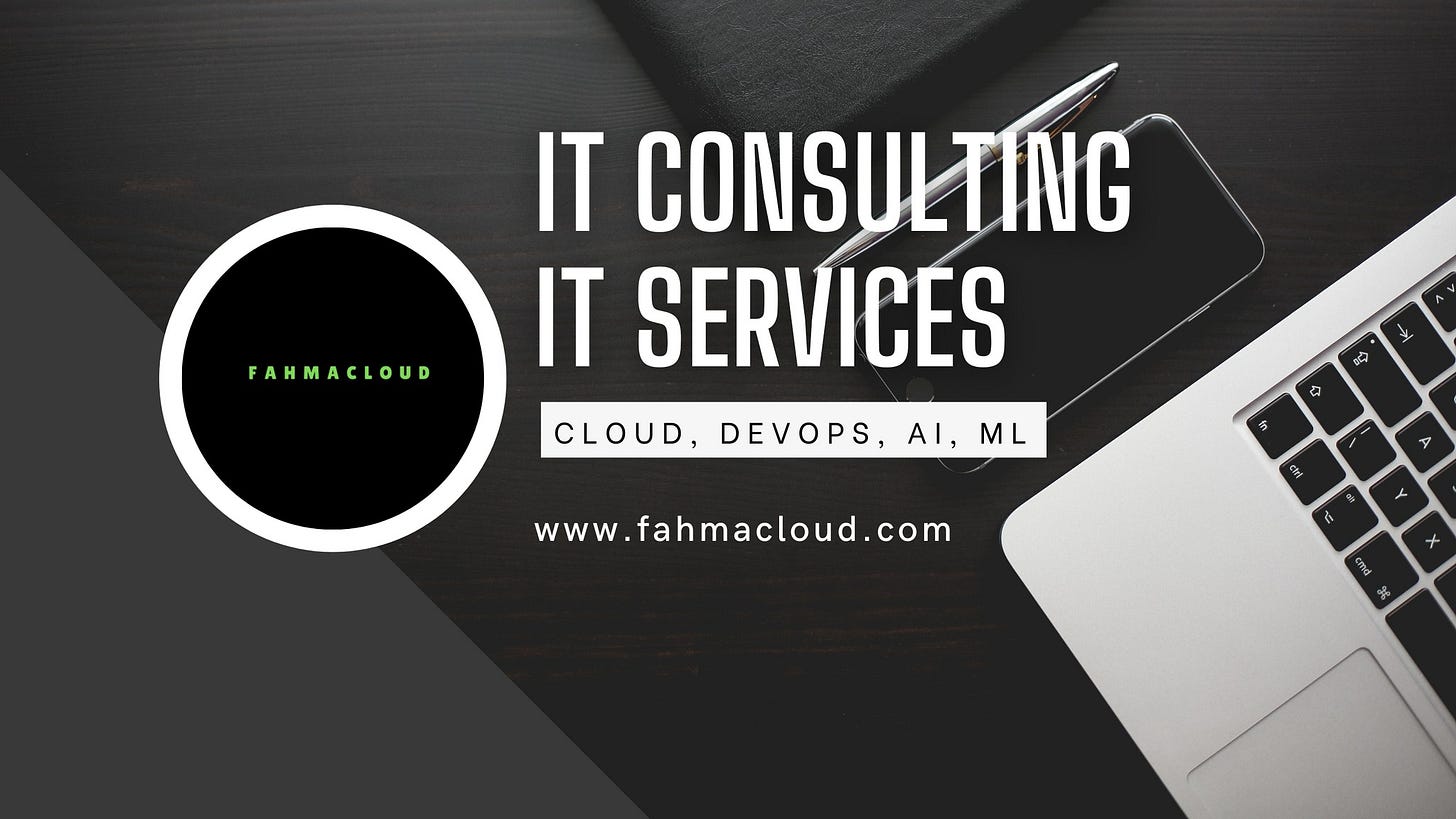Why Terraform State Management Should Be on Every Engineering Leader’s Radar
"Terraform State Management Deserves a Spot in Your DevOps Strategy" - DJ. KONE
Welcome back to the Fahmacloud Newsletter, where we share actionable insights on cloud strategies to optimize costs, automate operations, and secure your environment.
If your teams rely on Terraform to deploy and manage infrastructure, there’s one thing you can’t afford to overlook: state management.
At first, Terraform’s state file might seem like a small technical detail buried deep in the DevOps pipeline. In reality, it’s the single source of truth that defines your entire infrastructure across environments, teams, and cloud platforms.
When managed correctly, it keeps your deployments consistent, predictable, and auditable. When ignored, it becomes a silent risk to uptime, collaboration, and compliance.
The Business Risk Hidden in the State File
Poorly managed Terraform state can lead to:
Conflicting infrastructure changes: multiple engineers making updates simultaneously, causing instability.
Configuration drift: when production no longer matches what’s in version control.
Deployment delays: locked or corrupted state files blocking critical releases.
Data exposure: unencrypted local state files leaking sensitive information.
Each of these translates to lost engineering time, unexpected downtime, or audit vulnerabilities all preventable with the right processes in place.
How High-Performing Teams Solve It
Mature DevOps organizations invest early in remote state management.
Instead of storing the Terraform state file locally, they use shared, secure backends that centralize access and maintain integrity.
Recommended setups include:
AWS S3 + DynamoDB (for remote storage and state locking)
Azure Blob Storage + CosmosDB
Terraform Cloud or Terraform Enterprise with built-in access control, versioning, and collaboration
These backends create a single source of truth for infrastructure, aligning perfectly with principles of governance, security, and scalability.
Best Practices for Enterprise Teams
If you’re managing multiple environments (dev, staging, prod), make sure that:
Each environment has its own state file
Encryption and access controls are enforced (at rest and in transit)
State versioning and backups are part of your CI/CD pipeline
Terraform access is role-based to prevent unintended changes
The Takeaway
Terraform isn’t just an engineer’s tool, it’s part of your operational foundation.
How your organization handles state management says a lot about the maturity of your infrastructure governance and DevOps discipline.
A small oversight in state handling can ripple into costly downtime or compliance issues.
A well-designed backend strategy, on the other hand, boosts reliability, collaboration, and speed-to-market.
If your team is scaling cloud operations or managing infrastructure as code at any meaningful level make Terraform state management part of your executive DevOps conversation.
That’s it for this week’s Fahmacloud Newsletter (Edition 6).
If you found this useful, forward it to a teammate or peer managing AWS costs.
Have a question or topic you’d like us to cover in a future issue? Hit reply, we’d love to hear from you.



